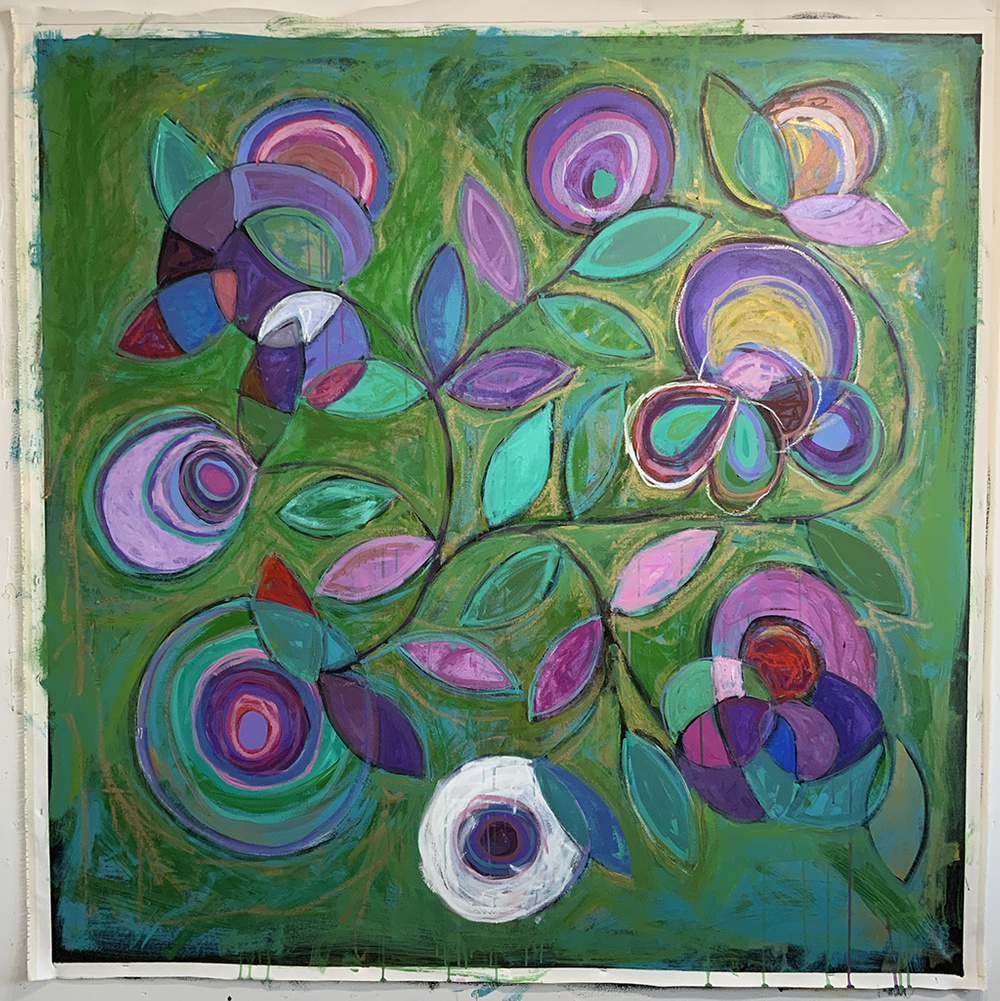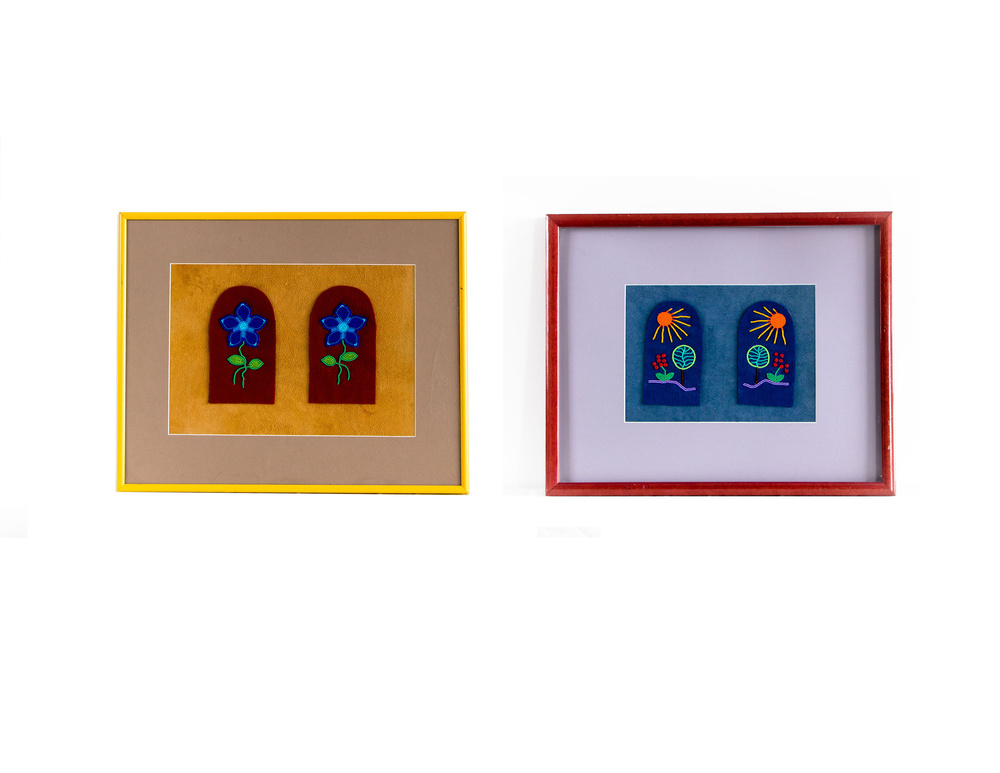Carrie Allison,
Christian Chapman,
Matthew Vukson
Bebakaan
Curated by Lori Beavis
November 19 – January 28, 2023



Centre d’art daphne Is pleased to present our first 3-person exhibition with Carrie Allison, Christian Chapman and Matthew Vukson for the 2022 programming year (November 19 - January 28 2023). This exhibition will examine the diversity of bead work in the three artist’s art practices – by turn, over-scale, animated and immersive as a method to discuss place, positionality, histories, and identity.
Christian Chapman,
Matthew Vukson
Bebakaan



Bebakaan / Each is Different: Carrie Allison, Christian Chapman, Matthew Vuckson
With thanks to Alan Corbiere for the Anishinaabemowin translation
Bebakaan is Nishnaabemwin for ‘each is different.’ The word came about, with good help from Alan Corbiere, while processing the element/s of the works in this exhibition. I was thinking of expressive words like, ‘alternatively’ or ‘exchangeable’ because, while the artworks relate to one another through the preoccupation of bead work, they are all in some way different from one another and different or outside of our expectations of beadwork.
The 3-person exhibition, Bebakaan with Halifax-based Carrie Allison (nêhiýaw/Cree, Métis and mixed European descent), Christian Chapman (Anishinaabe) from Fort William First Nation in northern Ontario, and Matthew Vuckson (NWT Tlicho Dene) living and working in Lac Brochet, Manitoba brings beading out of the realm of the intimate and fixed to over-scaled, animated, and immersive. The works included are a method for each artist to discuss place, positionality, histories, and identity in their own way.
Beading is the place setter for the work in Bebakaan. Across history, the practice of beading has been widely recognized by the peoples as a means of recording and translating cultural knowledge. Christi Belcourt has written, “Beading is deeply rooted in land-based histories and relationships bound up with stories and storytelling … [as such] beading carries the stories of how cultures have adapted over time.”[1]
The cultural belief that beading – in whatever form it takes, brings people into relationship with one another and with their own nation-specific lands, histories, identities, and worldviews is demonstrated in this exhibition.
Carrie Alisson’s animated beadwork responds to her maternal ancestry as a way for her to think through intergenerational cultural loss and acts of reclaiming. Her work combines old and new technologies to tell stories of the land, continuance, growth, and of healing. TO HONOUR [2](2019) is an experimental beaded animation exploring the concept of returning beadwork back to the landscape. Miyoskamiki (2020) is a beaded animation that depicts the growth of a Prairie Crocus, one of the first plants to emerge once winter begins to turn to spring. Customarily, hunter and farmers watched for these plants to mark the turning of the seasons. Nishotamowin (2020) is a nêhiyawin/cree word for understanding or self-in-relation. This is an audio piece that thinks through ‘getting to know’ or understanding by listening to the actions we carry out.[3] The viewer connects to the audio through a QR code to tune in to the sounds that filter through the window of Allison’s studio, as well as her amplified beading gestures and spoken thoughts.
Allison’s works are gestures to seek understanding and to connections to family, language, and land.
Christian Chapman creates his paintings and silkscreen prints to tell stories often using the Woodlands-style. This is a distinct style of art that blends traditional stories and contemporary mediums with bright colours and bold lines. Chapman is well-known for the insertion of easily recognizable figures – Princess Diana, Queen Elizabeth II, or Elvis onto a flat field where the figure is surrounded by florals and animal shells or hides. However since 2017, he has been inspired by the creative community of women who make and bead their regalia. He turned to the more intricate beaded details of the regalia, he says, because both his partner and his sister, along with other women in his near and extended family are bead workers. He made the decision to paint the bead work patterns to a vastly over-scale degree, as a way to better understand the delicate glass beads and the floral patterns. At the same time Chapman continues to work within the visual heritage of the Anishinaabeg beading patterns as a method to make connections with family histories, stories, and the land on which these relationships were formed.
Tlicho Dene artist Matthew Vukson is a teacher. Teaching others is part of a continuum that he has experienced – he was taught to bead by his mother and now he teaches this skill to others. Vukson likes to share stories that have been passed on to him from his family and he enjoys talking about his beading journey. He uses art as a form of reclamation and reconciliation.
In the immersive work in this exhibition he steps aside from the floral beading work that he was taught to turn his eye to the experience of violence and police brutality. In his work we find police badges, Police Badge 1, 2(2019, 2020), handcuffs Cuff’em (2022) ,and a hangman’s noose, Calculating Weight (2022). This work that speaks of brutal responses to the Indigenous body is balanced by beaded images that centre Indigenous cosmologies as a source of healing and nurturance. In work such as Place Before Time (2019) and Orbital Station NO 2 (2021). While other work such as Red Walker (2018) and Octavial (2019) remind us of the strength that we can draw on when we return to the land to walk through forest, masses of wild flowers, or to sit and watch the Northern Lights in Place Before Time (2019).
While in this exhibition, Vukson’s work is situated most deeply in the realm of customary beading his subject matter sidesteps of our expectations of beadwork. Allison and Chapman also change up the notion of beading as the play with movement and scale. Yet all three artists are, in their own way, making plain the continuity of the tradition of beading embedded in Indigenous art, with a difference.
[1] Christi Belcourt, (2010). Beadwork: First Peoples’ beading history and techniques. Owen Sound, ON: Ningwakwe Learning Press.
[2] Carrie Allison acknowledges the help from Chris Spencer-Lowe and technical equipment from NSCAD University.
[3] This piece is a sister project to Allison’s Kiskisohcikew (they make things to make people remember) a performance that looks at the action of beading used as a mnemonic device for language learning.
Next exhibition︎
